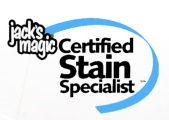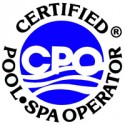FAQ Continued
I get no suction when I try to vacuum…
Most systems require adjustment to the valving to increase flow in the line through which you are vacuuming. You may want to close all the valves except the one on the line you are vacuuming through. On some systems, closing too many suction valves will cause the pump to cavitate, which occurs when it is starved for water. If the pump begins to shudder and make interesting noises, open the valves until this ceases.
If your suction still sucks, check that the filter is clean and the pump basket has been cleaned. Before vacuuming debris into the pump basket, always make sure the basket is locked into place properly so that debris cannot bypass it and clog the impeller.
My pump loses prime when I try to vacuum…
If you notice that your pump begins to draw in air when you connect the hose into the skimmer, possibly drawing in so much air that the pump loses its prime of water, it probably originates from an old, dry rotted hose with holes in it, or a cavitating pump drawing air in through the plumbing or valving.
To check the hose, hold one end tightly against your thigh while you make a tight seal with the other end around your mouth. Blow into the hose; you should feel very strong resistance. If you can blow easily, the hose has one or more holes or splits in it, and you may be able to hear the air being drawn through when it’s hooked up for vacuuming.
When a vacuum hose is hooked into the skimmer and perhaps some valves are closed to increase suction, we are increasing the “vacuum pressure” in the line, creating a front pressure on the pump. This can cause the pump to draw air in places it normally wouldn’t under lower pressure. This situation should be corrected by locating the air source and making appropriate repairs. (Repair info, see pumps)
When I vacuum, the dirt passes right through…
When vacuuming fine, silty dirt or debris, you may notice a cloudy stream of dirt coming back into the pool via the return. This can continue slowly, long after you stop vacuuming, and can create a frustrating cycle for the pool janitor at your pool. More common in sand filters than in other types, the dirt can be pushed right through the filter, especially one which may need a sand replacement. Indeed, this situation may indicate internal filter problems. It may also indicate a problem with the filter control valve. Old, loose multiport or push-pull valves can allow water to bypass the filter and return to the pool unfiltered. For more info on valves, click on link.
Another possibility is that the pump is oversized for the filter, and is pushing the water so hard, it pushes dirt right through the filter medium. A sand filter actually works a little better when it’s a little dirty; the added dirt helps to trap more dirt, so don’t backwash prior to vacuuming a pool with a sand filter. You may also use filter aids, added through the skimmer, which provide a gelatinous layer on top of the sand bed to help trap dirt. Another tip is to vacuum to waste, especially if the debris is a fine silt that can clog the filter quickly. To do this, overfill the pool first, and set the multiport valve to the ‘Drain’/ ‘Vacuum to Waste’ position. Roll out the backwash hose, and vacuum the dirt (and water) right out of the pool…to waste.
My coping and deck have become discolored…
Leaves and dirt may stain concrete surfaces or, after removing the winter cover, you may see a pronounced color difference. Pressure washing can remove these soils and restore original brightness to concrete and coping stones. A light acid washing on the coping stones also works very well, and algae or mildew can be lifted by scrubbing in a paste of calcium hypochlorite. Read all precautions before working with these dangerous chemicals in this manner.
My tiles have crusty white deposits…
Called efflorescence, this calcium deposit usually originates from grout or setting mortar. To remove, scrape it off the tile/wall, and/or acid wash it. There are products available such as CLR (Calcium, Lime, Rust remover), which can be purchased at your local hardware store, will work well for such tasks. Another method for removing calcium deposits is the pumice stone. Pumice is a light porous glassy lava stone that can be rubbed over a pool stain to remove it. You can get a pumice stone that can attach to your tele-pole or a pumice stone that has a handle you can swim with. Works great on cement stains, berry stains and paint.
My plaster is stained…
Dirt, leaf tannins, rust and other minerals can stain the finish of your plastered pool. If the stain is organic; left from a leaf or acorn for example, a small amount of granular chlorine added at that location and allowed to settle on the stain will usually remove it instantly. Other non-organic stains will not be removed by chlorine. Do not place chlorine tablets directly into the pool…they will stain and etch the plaster.
If chlorine doesn’t work, acid usually will. Draining and acid washing will remove a thin layer of plaster (and stains), exposing fresh, new looking plaster beneath. A No-Drain acid wash can also be performed, with varying results. For localized stains , a stain master tool can be used to deliver acid directly to the stain. Stains can also be sanded with pumice stones or wet/dry sandpaper.











